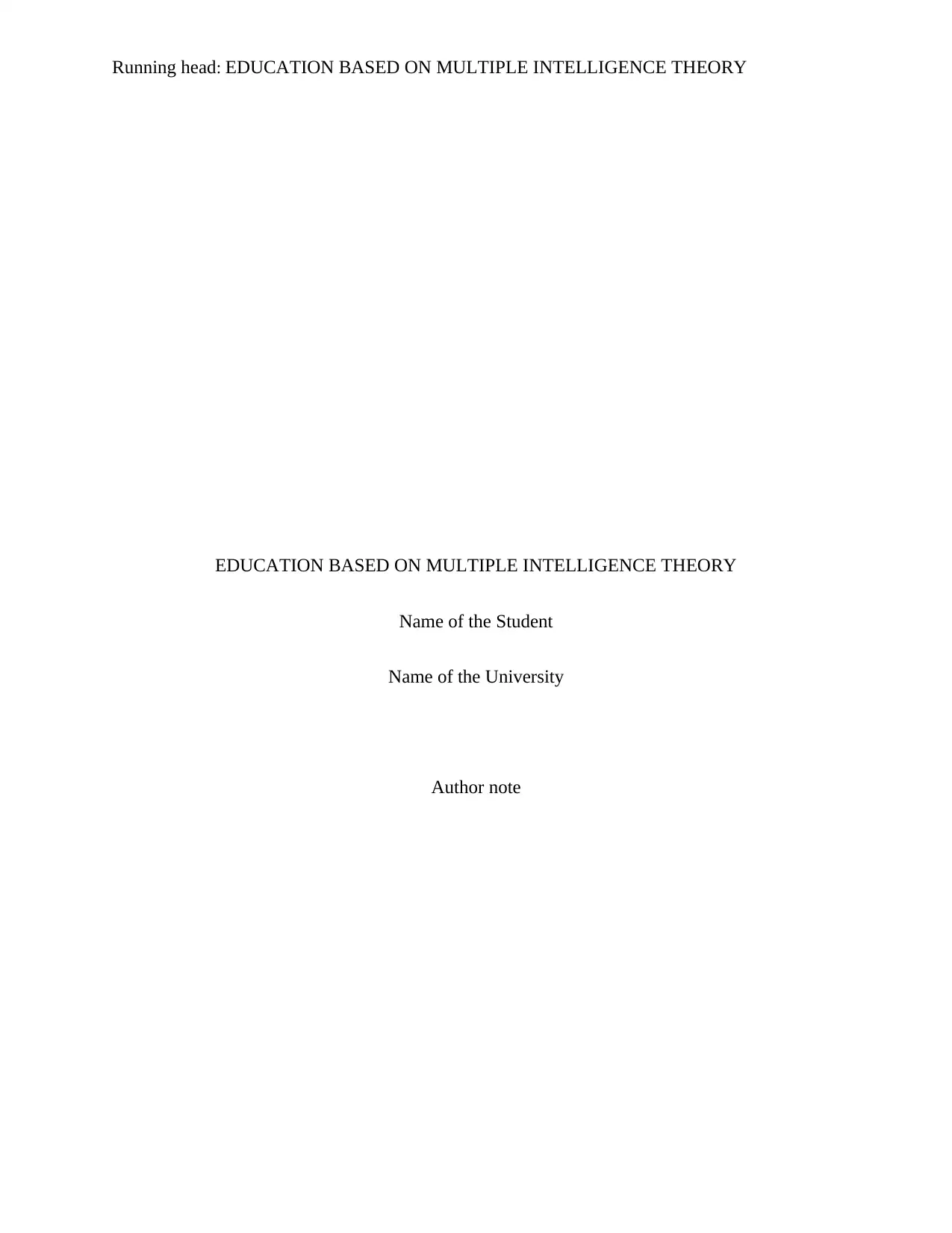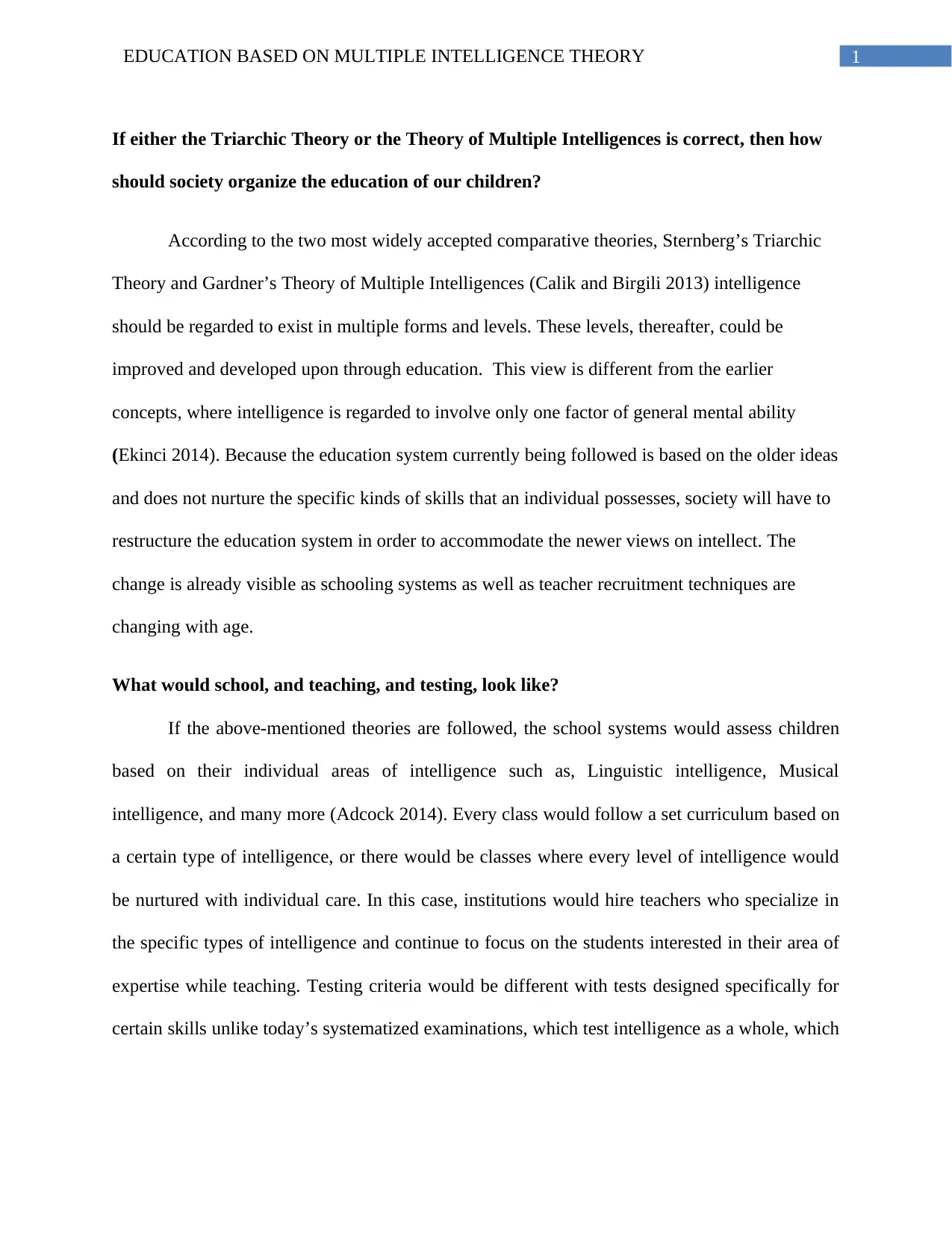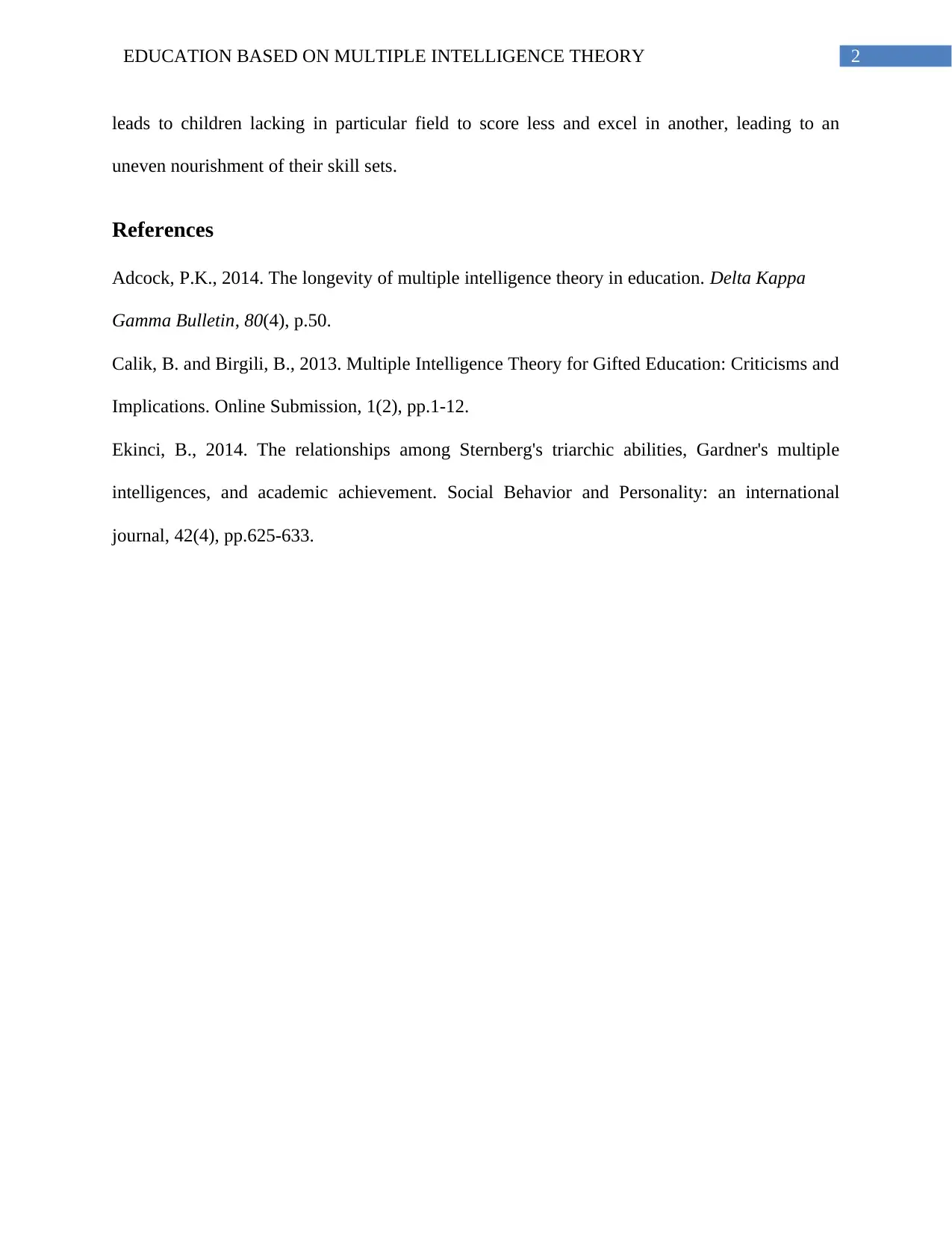The Role of Multiple Intelligences Theory in Modern Education
VerifiedAdded on 2022/12/28
|3
|474
|97
Essay
AI Summary
This essay examines the application of Multiple Intelligences Theory in education, contrasting it with traditional views of intelligence. It explores the theories of Sternberg and Gardner, suggesting that a shift towards recognizing multiple forms of intelligence is necessary for effective education. The essay proposes a restructuring of the education system, including specialized curricula, teachers, and assessment methods tailored to individual intelligences. It emphasizes the need to nurture different skill sets and move away from standardized testing that may not accurately reflect a student's overall abilities. The essay also references supporting literature to bolster its arguments, highlighting the importance of adapting educational practices to accommodate diverse learning styles and strengths. The essay emphasizes how multiple intelligence theory can enhance and transform the current education system.
1 out of 3










![[object Object]](/_next/static/media/star-bottom.7253800d.svg)